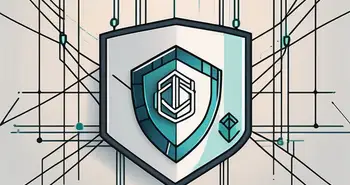Connecting Blockchains: A Guide to Cross-Chain Bridges

Welcome to the ultimate guide to cross-chain bridges! In this article, I will take you through everything you need to know about this revolutionary technology in the blockchain space. Whether you're a beginner or an experienced enthusiast, this guide will provide you with a solid understanding of cross-chain bridges and the potential they hold for the future of decentralized finance.
Understanding Cross-Chain Bridges
Before we delve into the mechanics of cross-chain bridges, let's start with the basics. What exactly are cross-chain bridges and what purpose do they serve in the world of blockchain?
When we talk about cross-chain bridges, we are essentially referring to sophisticated systems that facilitate the interoperability and exchange of assets between distinct blockchain networks. These bridges serve as crucial infrastructures within the blockchain ecosystem, enabling users to navigate seamlessly across different platforms and harness the unique features each blockchain offers.
Definition and Function of Cross-Chain Bridges
At their core, cross-chain bridges are systems that enable the transfer of assets between different blockchains. They act as a link, allowing users to move their tokens or assets from one blockchain to another seamlessly.
Imagine you have a digital asset on Blockchain X, but you want to leverage the features or opportunities available on Blockchain Y. Instead of going through a lengthy process of selling your asset on X and buying it again on Y, cross-chain bridges allow you to transfer your asset from X to Y directly, saving time and reducing transaction costs.
Furthermore, these bridges utilize a combination of smart contracts, oracles, and other technologies to ensure the secure and efficient transfer of assets across disparate blockchains. This intricate process involves verifying transactions, maintaining consensus, and safeguarding the integrity of the assets being transferred.
The Importance of Cross-Chain Bridges in Blockchain Technology
Cross-chain bridges play a crucial role in fostering interoperability between different blockchains. In a rapidly evolving crypto landscape with numerous blockchain platforms, the ability to connect these ecosystems becomes invaluable.
Think of cross-chain bridges as the bridges that connect islands of different blockchains. They break down barriers and enable seamless communication, unlocking a world of possibilities for developers, traders, and investors alike.
Moreover, as the blockchain space continues to expand and diversify, the demand for cross-chain compatibility grows exponentially. This demand stems from the need to access decentralized applications (dApps), decentralized finance (DeFi) protocols, and various other blockchain services that may exist on separate networks. Cross-chain bridges serve as the conduits that bridge these decentralized islands, creating a more interconnected and versatile blockchain ecosystem.
The Mechanics of Cross-Chain Bridges
Now that we have a good foundation, let's dive into how cross-chain bridges actually work and the technologies behind them.
How Cross-Chain Bridges Work
Cross-chain bridges utilize a combination of smart contracts, oracles, and other innovative protocols to enable secure and trustless asset transfers.
Smart contracts act as the backbone of these bridges, ensuring the transfer of assets is executed according to predefined rules and conditions. Through these contracts, users can initiate asset transfers and provide the necessary information for the transaction to take place.
Oracles, on the other hand, serve as the intermediaries between different blockchains, providing real-time, verifiable data required for the transactions. They act as the eyes and ears of the bridge, relaying information between the participating blockchains to ensure accurate asset transfer.
The Role of Smart Contracts in Cross-Chain Bridges
Smart contracts are the cornerstone of cross-chain bridges. They are the digital agreements that enforce the rules and conditions of asset transfers between blockchains.
One of the key advantages of using smart contracts in cross-chain bridges is their transparency and immutability. Once a smart contract is deployed on a blockchain, it cannot be altered or manipulated, ensuring a high level of security and trust in the transfer process.
Furthermore, smart contracts enable the automation of asset transfers, eliminating the need for intermediaries and reducing transaction costs. This automation ensures that the transfer process is efficient and fast, making cross-chain bridges an attractive solution for asset holders.
Different Types of Cross-Chain Bridges
Now that we understand the mechanics, let's explore the different types of cross-chain bridges available in the blockchain ecosystem.
Federated Bridges
Federated bridges rely on a group of trusted validators who are responsible for facilitating asset transfers between blockchains. These validators ensure that the assets being transferred are valid and comply with the predefined rules of the bridge.
While federated bridges provide a higher level of security and control due to their centralized nature, they may be perceived as less decentralized compared to other bridge types.
Hash Time-Locked Contracts (HTLCs)
Hash Time-Locked Contracts, or HTLCs, are a popular type of cross-chain bridge that leverages cryptographic techniques to securely transfer assets between blockchains.
HTLCs utilize hash functions and time locks to ensure the integrity of the transfer process. The sender locks their asset with a hashed secret, and the recipient can only unlock the asset by revealing the secret within a specified timeframe.
Sidechains and Relay Chains
Sidechains and relay chains provide an alternative approach to cross-chain bridging. Sidechains are independent blockchains that are connected to the main blockchain, enabling users to transfer assets between the sidechain and the main chain seamlessly.
Relay chains, on the other hand, act as a hub that connects different blockchains together, allowing users to transfer assets between these chains.
The Benefits of Using Cross-Chain Bridges
Now that we have explored the different types and mechanics of cross-chain bridges, let's uncover the benefits they offer in the blockchain space.
Interoperability Between Different Blockchains
Cross-chain bridges bring a new level of interoperability to the blockchain ecosystem. They allow assets to flow freely between different blockchains, breaking down silos and enabling collaboration on a global scale.
This interoperability opens up a world of opportunities for developers, who can now leverage the functionalities of different blockchains to create innovative applications and services.
Enhanced Liquidity and Scalability
Cross-chain bridges enable the seamless transfer of assets, which in turn enhances liquidity across different blockchains. With increased liquidity, users have more opportunities to trade and invest, leading to a vibrant and dynamic ecosystem.
Furthermore, cross-chain bridges contribute to the scalability of blockchain networks. By allowing assets to flow between different chains, the burden on a single blockchain is reduced, resulting in improved transaction speeds and overall network efficiency.
Potential Risks and Challenges
While cross-chain bridges bring a myriad of benefits, it's important to be aware of the potential risks and challenges associated with this technology.
Security Concerns in Cross-Chain Bridges
The decentralized nature of cross-chain bridges introduces security risks. While smart contracts provide a strong layer of security, they are still vulnerable to hacks or exploits. As the value of assets being transferred through bridges increases, security becomes paramount.
It's crucial for users and bridge operators to implement robust security measures and conduct thorough audits to minimize the risk of any potential vulnerabilities.
Technical Challenges and Limitations
Implementing cross-chain bridges requires complex technical infrastructure and protocols. As a result, technical challenges may arise during the development and deployment of these bridges.
Interoperability between different blockchains can be a complex task, requiring in-depth knowledge of various blockchain networks and their respective protocols. Overcoming these challenges calls for collaboration and innovation within the blockchain community.
FAQ
Q: What are cross-chain bridges?
A: Cross-chain bridges are systems that enable the transfer of assets between different blockchains, facilitating interoperability and seamless asset transfers.
Q: How do cross-chain bridges work?
A: Cross-chain bridges utilize smart contracts, oracles, and other protocols to facilitate secure and trustless asset transfers. Smart contracts ensure the execution of predefined rules, while oracles provide real-time data required for the transactions.
Q: What are the benefits of using cross-chain bridges?
A: Cross-chain bridges enhance interoperability between different blockchains, increasing liquidity and scalability. They enable developers to leverage the functionalities of different chains and provide users with more trading and investment opportunities.
Q: What are the risks associated with cross-chain bridges?
A: Security concerns and technical challenges are the main risks associated with cross-chain bridges. Smart contract vulnerabilities and the complexity of achieving interoperability pose challenges that should be addressed through robust security measures and collaboration within the blockchain community.
As an expert in the field of cross-chain bridges, I have witnessed the immense potential this technology holds. From my personal experience, I can confidently say that cross-chain bridges are revolutionizing the way we interact with blockchains, opening up a world of possibilities for decentralized finance and beyond.
My advice to anyone interested in leveraging cross-chain bridges is to thoroughly research and understand the technology before diving in. Stay updated with the latest advancements, collaborate with experts, and always prioritize security when dealing with your assets.
With the rapid growth and innovation in the blockchain space, cross-chain bridges are here to stay. Embrace the power of interoperability and witness the transformative impact it can have on the future of finance. The possibilities are endless!
Ready to experience the future of trading with the power of blockchain technology? Look no further than Morpher, the revolutionary trading platform that embodies the principles of interoperability and innovation discussed in this guide. With Morpher, you can trade across a multitude of asset classes, including stocks, cryptocurrencies, and more, all with zero fees, infinite liquidity, and up to 10x leverage. Embrace the flexibility of fractional investing, the freedom of a non-custodial wallet, and the excitement of Virtual Futures. Sign Up and Get Your Free Sign Up Bonus today to transform your trading experience and join the vanguard of investors who are already shaping the future of finance.

Disclaimer: All investments involve risk, and the past performance of a security, industry, sector, market, financial product, trading strategy, or individual’s trading does not guarantee future results or returns. Investors are fully responsible for any investment decisions they make. Such decisions should be based solely on an evaluation of their financial circumstances, investment objectives, risk tolerance, and liquidity needs. This post does not constitute investment advice.

Painless trading for everyone
Hundreds of markets all in one place - Apple, Bitcoin, Gold, Watches, NFTs, Sneakers and so much more.

Painless trading for everyone
Hundreds of markets all in one place - Apple, Bitcoin, Gold, Watches, NFTs, Sneakers and so much more.








